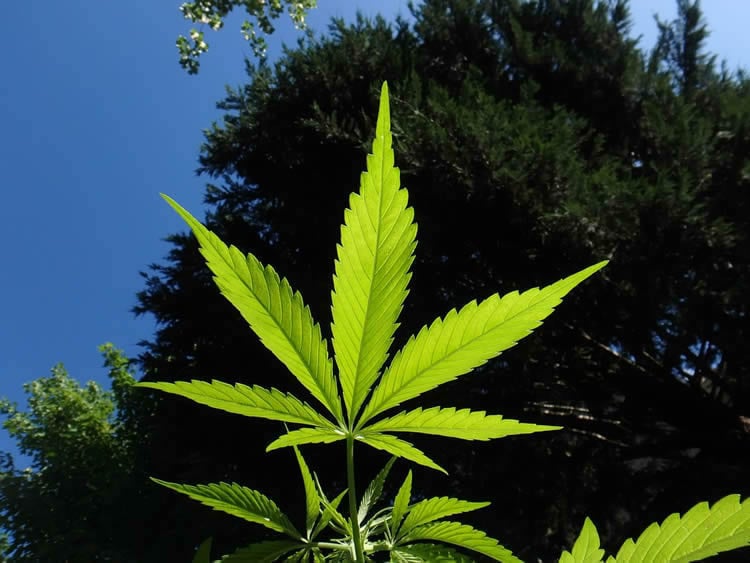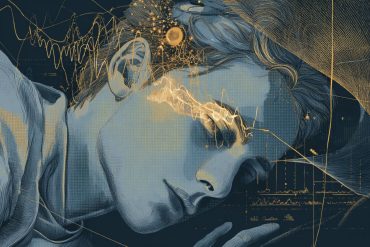Summary: A new study reveals long term alcohol use is much more damaging to the brain than marijuana. Researchers reveal long term alcohol use is linked to a decrease in both white and gray matter integrity in the hippocampus. However, no such decrease is associated with long term cannabis use.
Source: University of Colorado Boulder.
Marijuana may not be as damaging to the brain as previously thought, according to new research from the University of Colorado Boulder and the CU Change Lab.
The research, which was published in the journal Addiction, examined the brains of more than 1,000 participants of varying ages, and found that long-term alcohol use is much more damaging to the brain than marijuana, contradicting years of research into the effects of marijuana and other cannabinoid products on the brain.
These findings, and other conclusions suggesting the potential public health benefits of marijuana, come amid the recent back-and-forth on federal marijuana policy and the nation’s opioid crisis.
Yet scientists are still hesitant to say that cannabinoid usage, specifically as it pertains to marijuana and its associated products, is beneficial.
“Particularly with marijuana use, there is still so much that we don’t know about how it impacts the brain,” said Rachel Thayer, a graduate student in clinical psychology at CU Boulder and the lead author of the study. “Research is still very limited in terms of whether marijuana use is harmful, or beneficial, to the brain.”
While the negative effects of alcohol on the brain have been known by researchers for years, it has been assumed that cannabinoids are as damaging to long-term brain health—if not more—given the immediate psychoactive effects of the THC (the chemical that gets a person high) in marijuana.
However, this may not necessarily be true.
“When you look at the research much more closely, you see that a lot of it is probably not accurate,” said study co-author Kent Hutchison, a professor of behavioral neuroscience at CU Boulder and co-director of the CU Change Lab, which explores the factors linked with health and risk behavior.
“When you look at these studies going back years, you see that one study will report that marijuana use is related to a reduction in the volume of the hippocampus. The next study then comes around, and they say that marijuana use is related to changes in the cerebellum or the whatever.”
“The point is that there’s no consistency across all of these studies in terms of the actual brain structures.”
To combat this misconception in the existing literature, the researchers gave a fresh look at some existing neurological imaging data from the MRIs of both adolescents and adults to see how, using the same variables and controls, the influence of cannabinoids on the brain compared to or contrasted with alcohol.
“With alcohol, we’ve known it’s bad for the brain for decades,” said Hutchison. “But for cannabis, we know so little.”
To see any potential difference, the researchers used the data to examine the most important neurological components: gray matter and white matter.
Gray and white matter are the two main types of tissue that make up the brain and central nervous system. Gray matter is the “stuff”—the cell bodies, dendrites and axon terminals—that enable functionality. White matter, then, is how the grey matter communicates between clusters. Any loss of size or integrity in either can make the brain not work quite like it should.
The study found that alcohol use was significantly associated with a decrease in gray matter size and white matter integrity, particularly for adults who may have decades of exposure. Marijuana and associated cannabinoid products, on the other hand, were not shown to have any long-term impact on the amount of gray matter in the brain or on the integrity of the white matter.

The research demonstrated that, “while marijuana may also have some negative consequences, it definitely is nowhere near the negative consequences of alcohol,” according to Hutchison.
Despite marijuana not being as harmful as once thought, and definitely not as damaging as other legal and illegal products, the research has not yet proved any possible benefits. This is particularly the case as it relates to the different products on the market (both THC and non-THC-containing cannabinoid products), their usage with pain and addiction treatment and the effect on different ages — especially as cannabinoid usage is on the rise among older populations.
“Considering how much is happening in the real world with the legalization movement, we still have a lot of work to do,” Hutchison said.
Source: Cay Leytham-Powell – University of Colorado Boulder
Publisher: Organized by NeuroscienceNews.com.
Image Source: NeuroscienceNews.com image is Jeffrey C. Smith lab, University of Colorado Boulder.
Original Research: Abstract in Addiction.
doi:10.1111/add.13923
[cbtabs][cbtab title=”MLA”]University of Colorado Boulder “Cannabinoids are Easier on the Brain Than Booze.” NeuroscienceNews. NeuroscienceNews, 9 February 2018.
<https://neurosciencenews.com/cannabinoids-booze-8465/>.[/cbtab][cbtab title=”APA”]University of Colorado Boulder (2018, February 9). Cannabinoids are Easier on the Brain Than Booze. NeuroscienceNews. Retrieved February 9, 2018 from https://neurosciencenews.com/cannabinoids-booze-8465/[/cbtab][cbtab title=”Chicago”]University of Colorado Boulder “Cannabinoids are Easier on the Brain Than Booze.” https://neurosciencenews.com/cannabinoids-booze-8465/ (accessed February 9, 2018).[/cbtab][/cbtabs]
Abstract
Structural neuroimaging correlates of alcohol and cannabis use in adolescents and adults
Background and Aims
Chronic alcohol use is associated with lower gray matter volume, and we reported recently that alcohol use showed negative associations with widespread gray matter (GM) volume even among young adults. The current study aimed to test the strength of association between (1) alcohol use and GM volume; (2) alcohol use and white matter (WM) integrity; (3) cannabis use and GM volume; and (4) cannabis use and WM integrity among adults and adolescents.
Design and Setting
General linear models within large pooled cross-sectional samples of adolescents and adults who had participated in studies collecting substance use and neuroimaging data in the southwestern United States.
Participants
The current analysis included adults aged 18–55 years (n = 853) and adolescents aged 14–18 years (n = 439) with a range of alcohol and cannabis use.
Measurements
The dependent variable was GM volume or WM integrity, with key predictors of alcohol use [Alcohol Use Disorders Identification Test (AUDIT) score] and cannabis use (past 30-day use).
Findings
Alcohol use showed large clusters of negative associations (ηp2 = 0.028–0.145, P < 0.001) with GM volume among adults and to a lesser extent (one cluster; ηp2 = 0.070, P < 0.05) among adolescents. Large clusters showed significant associations (ηp2 = 0.050–0.124, P < 0.001) of higher alcohol use with poorer WM integrity, whereas adolescents showed no significant associations between alcohol use and WM. No associations were observed between structural measures and past 30-day cannabis use in adults or adolescents.
Conclusions
Alcohol use severity is associated with widespread lower gray matter volume and white matter integrity in adults, and with lower gray matter volume in adolescents.






